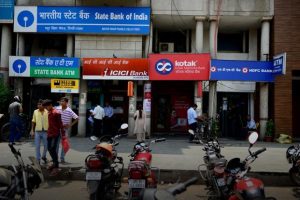This article is written by Soma-mohanty of KIIT School of Law, Bhubaneswar. In this article she has mentioned about the establishment of Payment Banks, how it has helped economically backward people, about the advantages and objectives of the Payments Bank and the list of Payments Bank working in India so that people can access them easily.
Payment Banks
The concepts of payment banks are brought forward by the Reserve Bank of India. This concept was brought forward by the Committee on Comprehensive Financial Services for Small Business and Low Income Households. Then the Reserve Bank of India framed the guidelines for the payments of the bank.
The notice for the application was given and after the submission of the list of all 41 applicants who had applied, the list was published after which an external advisory committee was set up to look into the licence application and to make the evaluation. Consequently, 11 entities out of 41 applicants were selected and were given “in-principle” licence. This licence had the validity of 18 months and within the period the entities had to fulfil all the requirements and failure would be led to lapse of licence.
What is payment banks?
Payment bank is a type of bank which is not involved in any type of credit risk. This type of banks provides credit to smaller units such as Low-income household, migrant labour workforce, small business units and unorganized sectors. It has no provision of issuing credit cards or advance loans to the customers.
The services provided by the payments bank are as follows.
- Remittance service
- Automated Teller Machine Service
- Debit cards for money transaction
- Net banking service
- Bill payments service
- Mobile banking service
- Third-party fund transfer
The objective of payment banks
The main objectives of the payment banks are to provide financial inclusion to the following sections.
- Low-income household
- Migrant labour workforce
- Small business
- Unorganized sector
It aims to provide saving accounts to those who are not able to create a savings account as they are afraid to pay heavy maintenance.
Importance of payment banks
Aid to the poor in India
- Earlier days poor people used to face a lot of problems in the matter of money transactions. We have seen that most of the poor people leave their village and settle in towns to earn money. The people belonging to this migrating class face hurdles in sending money to their families back in the village.
- Thus the payment bank provides them with a saving account, which can be opened by them easily and it has tie-ups with commercial banks which provide ATM. Thus making money transfer easy and smooth for poor people.
- Earlier maintaining a savings account used to cost a lot and if the person fails to maintain the mentioned amount, they are fined. Thus poor people were not able to open a savings account.
- But payment banks provided scope for the poor to save their hard-earned money.
- Payment banks provide a higher rate of interest than other commercial banks. Thus it increases the amount of savings.

Alternative of traditional banks
- Rural areas have always been neglected and thus the people of rural areas face a lot of problems. Village people need to travel to cities to get their money transactions done. This is because traditional banks do not open branches in small villages.
- Opening a traditional bank in every part of India puts an effect on the economy, thus it is not possible to open more branches in areas with less population. But it is not mandatory for the payments bank to open branches in every part as they can operate through mobile phones.
- The people just need to complete their KYC and link their Aadhaar card to their number and they can easily send and accept money in their account through online transfer.
- Payments bank provide interest on small amounts even, thus it increases the savings.

Guidelines for licencing of payment banks
Following are the guidelines for licencing of payment banks.
Scope of activities
- The payments bank are allowed to accept demand deposits which include current deposit as well as saving bank deposits. This deposits can be done by the small business unit, individual, and other organisation who are eligible. The Deposit Insurance and Credit Guarantee Corporation of India (DICGC) scheme permits the payments bank to get the deposits covered under this deposit insurance scheme.
- Though the payments bank are provided to carry on payments and remittance services and demand deposit products to small businesses and low-income households, a maximum limit is put forward. Every customer is entitled to deposit a maximum of Rs. 1,00,000. The Reserve Bank of India has the authority to increase the maximum limit but it depends on the performance of the banks.
- The payments and remittance services are performed by the payments bank by Automated Teller Machines (ATMs), Business Correspondents (BCs) and mobile internet banking. When funds are accepted through payments or remittance service at one endpoint, it can be done through Business Correspondent, branches and various channels. And payments at the other end can be done through Automated Teller Machines (ATMs), Business Correspondents (BCs). if the instruction is issued under the PSS Act, then cash-out at Point-of-sale terminal is allowed. The payments bank has been authorised by the PSS Act to be the part of any network regarding card payment.
- Payment banks do not have the authority to issue credit cards but they have the right to distribute ATM as well as Debit Card.
- The payments bank are provided with the right to provide internet banking service to the customers. The objective behind the setting up of the payments bank is to provide well skilled and developed technology to lessen the cost of banking solution. While offering internet banking service the payments bank should ensure that the system running consists of business partners, third party service providers and risk management systems and control management. The payments bank should run there internet banking service in accordance with the guidelines provided by the Reserve Bank of India in the matter of cyber crime, information security, electronic banking and technology risk management.
- The payments bank has the right to choose any bank of its choice to establish a Business Correspondent relationship with. But this relationship should be established according to the provisions of Business Correspondent laid down by the Reserve Bank of India.
- All the transactions regarding the remittance or settlement can be done by payments bank. The payments bank has the authority to accept the remittance that is to be sent and receive remittance from multiple banks. But these transactions should be done by the approval of the Reserve Bank of India through authorised payment method such as RTGS, NEFT, IMPS.
- Payments bank are permitted to undergo cross border settlement transaction and its transactions can be made by personal payments as well as settlement through the current account. The Reserve Bank of India has the right to allow the payments bank to undertake foreign exchange transactions.
- Payment banks after fulfilling the requirement of the provision mentioned in the sectoral regulators of products with the permission of the Reserve Bank of India can be granted to undertake non-risk sharing simple financial services.
- There is a provision of bill payments of the customer provided by the payments bank. The payments bank complete the utility bill payment, etc.
- If the promoter is involved in any financial or non-financial activity, then the activity should be performed differently. There should be no association of the financial and non-financial service activity with the services of payments bank such as banking as well as financial services.
- The payments bank should be differentiated from all other banks. Thus, it is mandatory for the payments bank to add “Payments Bank” to their name.
Deployment of funds
- The payments bank are not authorised to get involved in lending activities. Its is mandatory for the payments bank to maintain Cash Reserve Ratio (CRR) with the Reserve Bank of India. The payments bank has to invest at least 75% of its demand deposit balance in the Government security or Treasury Bills and it should have the maturity up to one year with the eligibility security maintenance of Statutory Liquidity Ratio and for the purpose of liquidity management as well as operational functions it should be having 25% in current or fixed deposit in association with other scheduled commercial banks.
- When the payments bank issues the balance outstanding under PPIs, there should be flexible investment between Statutory Liquidity Ratio of eligible Government securities or Treasury Bills and bank deposit, so that it is done with compliance to CRR AND SLR on its “overall outside demand and time liabilities” including its deposit balances and outstanding balances in PPIs issued.
- It is essential for the payment banks to manage their liquidity, so it is required for them to get involved in the payment and settlement system which enables them to get access to the inter-bank uncollateralised call money and the collateralized repo and CBLO market.
Capital requirement
- The payment banks are more subjected to operational risk than to credit as well as market risk. For the operation, payment banks are required to invest in technological infrastructure and to get a shield against the operational risk the payment bank requires capital. A minimum amount has been fixed for equity capital of the payment bank. It is mandatory for the payment banks to maintain a minimum capital adequacy ratio which is 15% of its risk-weighted assets, uniformly and the ratio can be changed according to the rules of the Reserve Bank of India.
|
Tier capital |
Percentage |
|
|
1. |
Tier I capital |
7.5% of risk weighted assets |
|
2. |
Tier II capital |
100% of total Tier I capital |
- As the payments bank will not have significant risk-weighted assets, its compliance with a minimum capital adequacy ratio of 15 per cent would not reflect the true risk. Therefore, as a backstop measure, the payments bank should have a leverage ratio of not less than 3 per cent, i.e., its outside liabilities should not exceed 33.33 times its net worth (paid-up capital and reserves).
- But the capital adequacy ratio of the payment banks would be computed under the Basel Committee’s standardised approaches as they are not permitted to deal with sophisticated products.
Foreign shareholding
- The total paid-up capital should be below 10% and aggregate limit should not exceed 24% of the total paid-up capital in the matter of Foreign Institutional Investors (FIIs) / Foreign Portfolio Investors (FPIs), individual FII / FPI holding. But if the Board of Directors passes a resolution followed by the special resolution to that effect by its General Body, then the total paid-up capital can be increased by 49% by the bank.
- In payment banks, the foreign shareholdings are processed and regulated according to the amendments and rules of Foreign Direct Investment policy. The policy laid down by Foreign Direct Investment policy for private sector banks is the same as for the payment of banks even.
- According to the existing regulation of Foreign Direct Investment policy, 74% of the paid-up capital from foreign investment is allowed in both the private sectors as well as the payment of banks.
- Out of the 74% of the paid-up capital invested, 26% of capital should be held by the residents.
- The individual holding in the matter of Non-resident Indian (NRI) is hindered to 5% of total paid-up capital on both repatriations as well as non-repatriation basis.
- The aggregate limit for Non-resident Indian (NRI) should not exceed more than 10% of total paid-up capital on both repatriations as well as non-repatriation basis.
- When a special resolution is passed by the banking company in association with the General Body then the Non-resident Indian (NRI) are allowed up to 24% of total paid-up capital on both repatriations as well as non-repatriation basis.
Voting rights
- A shareholder has the certain right of voting according to the Bank regulation Act,1949, in private sector banks but these rules are not applied to the payment banks.
Prudential norms
- The prudential norms are regulations of RBI which are not applicable for the payment banks as they do not have the provision to provide loans and provide advances. But the payment banks are open to establishing a robust operational risk management system, which enables them to get exposed to operational risk. The payment banks have more possibility to liquidity risk but if they work according to the provisions of RBI’s liquidity risk management, their application would be extended.
Promoters’ contribution
There is no provision laid down for limiting the shareholdings of promoters. But in case of the promoters of the payment bank are entitled to hold at least 40% of its paid-up equity capital for the first five years, which is from the commencement of its business.
Business plan
- To get payment banks to licence it is mandatory for applicants to submit their report of business plans as well as projects report attached to the application.
- It is necessary to mention the strategies for setting up a payment bank, in the business plan.
- Following are the requirements needed to be present in the business plan
- Business model
- The access points of the bank in rural and semi-urban areas
- Control policy of customer grievance redressal
- Joint venture partnership with a scheduled commercial bank
- The business plans submitted should be transparent.
- The applicants with business plans aiming to set up access points in the under-banked States/ Districts, North-East, East and Central zone of India would be given more preference.
- To increase the effectiveness of network access points in remote or rural areas by setting up their ATMs or using another network branch.
- The main objective of the payment banks should be to lower the costs of setting up networks and to extend the.
Corporate governance
- The payment banks have a board consisting of a majority of independent directors.
- The corporate governance formulates the guidelines for the payment banks. It consists of certain criteria for directors as per the rules of RBI and it is regulated from time to time.
Other conditions
- BCs, ATMs and other networks are the instruments required to be operated in remote areas by the payment banks. It is not mandatory for the payment banks to open 25% of branches in unbranched rural areas but it is required to operate at least 25% of the physical access point in the rural centres. It is also mandatory to establish a controlling office to look into the running of all the access points, it controls the various outlets in the rural areas and also looks after the customer grievance redressal to satisfy the customers. The operations of the payment banks should be done in accordance with the norms as laid down by the Reserve Bank of India. New innovations are also accepted but the payment banks need to get their plans approved by the Reserve Bank of India and can execute accordingly.
- The payment banks ought to have an organised and technical Customer Grievances Cell to look into the complaints of the customers.
- The payment banks should work according to the provisions provided by the Reserve Bank of India. If they divert from the provisions and do not follow the conditions, then it would lead to cancellation of the licence
Procedure for application
- The application for the payment banks shall be submitted according to Rule 11 of the Banking Regulation (Companies) Rules, 1949. In the format of form III of Rule 11 of the Banking Regulation (Companies) Rules, 1949
- The business plan attached to the application should be according to the paragraph 11 of Rule 11 of the Banking Regulation (Companies) Rules, 1949
- Other required information should be provided according to the Annex.
Procedure for RBI decision
- The submitted application for the request of setting up a payment bank would be screened by the Reserve Bank of India to check the eligibility of the applicant. The Reserve Bank of India has the right to add up some more criteria according to the “fit and proper” to enhance the development.
- There is a committee which is formed to evaluate the application for setting up payment banks and the committee is known as the External Advisory Committee (EAC). it consists of skilled professionals like bankers, chartered accountants, finance professionals, etc.
- The applicants can be called to give more information required to the External Advisory Committee and it has been vested with the right to get clarification regarding any information provided by the applicant in the application form. Then the External Advisory Committee submits the recommendation to Reserve Bank of India for consideration. And after looking into the matter the outcome for setting up a payment bank would be given by the Reserve Bank of India and its decision would be final.
- Then the Reserve Bank of India provides in-principle approval to set up the payment bank with the validity of eighteen months. And if the applicant can’t set up the payment bank within the stipulated time, then it lapses automatically. Thus the applicants are needed to set up the payment bank in the given time.
- After the Reserve Bank of India issues the in-principal approval to the applicants for setting up the payment bank and it is seen that the promotors or the companies/entities are involved with
- The names of the applicants for the licence of payment banks as well as the names of applicants whose application was approved are provided in the website of Reserve Bank of India, to provide transparency.
- Payment banking is highly investment business thus it is required to put forward a selective basis to get the licence of payment bank and those criteria are
- An applicant who fits in the given requirement
- Applicant having faultless record track
- Applicant providing organised and efficient customer service
Small finance banks and payment banks
| Basis |
Small finance banks |
Payment banks |
|
Meaning |
Small finance banks are niche category banks that provide banking service of accepting and depositing of money for the section of people who are not eligible for. |
Payment bank is a type of bank which is not involved in any type of credit risk. This type of banks provides credit to smaller units such as Low-income household, migrant labour workforce, small business units and unorganized sectors. It has no provision of issuing credit cards or advance loans to the customers. |
|
Scope of activities |
|
|
|
Facilities provided |
|
|
|
Facilities excluded |
|
|
|
Eligible promoters |
|
|
|
Examples |
|
|
Best payment banks in India
Best payment banks in India in 2019
|
RANK |
PAYMENT BANKS NAME |
|
1. |
Aditya Birla Payment Bank |
|
2. |
Paytm Payment Bank |
|
3. |
Airtel Payments Bank |
|
4. |
India Payments Bank |
|
5. |
Jio Payment Bank |
|
6. |
NSDL Payments Bank |
|
7. |
Vodafone m-Pesa Payments Bank |
|
8. |
Fino Payment Bank |
Payment bank list in India
There was an application of 41 organisations to get the approval for provisional payments bank but Reserve Bank of India approved only 11 out of the 41 applicants. The lists of the approved applicants are as follows.
|
Sl. no |
List |
|
1. |
Aditya Birla Nuvo Limited |
|
2. |
Airtel M |
|
3. |
Cholamandalam Distribution Services Limited |
|
4. |
India Department of Posts |
|
5. |
Fino PayTech Limited |
|
6. |
National Securities Depository Limited |
|
7. |
Reliance Industries Limited |
|
8. |
Shri Dilip Shantilal Shanghvi |
|
9. |
Paytm Payments Bank Limited |
|
10. |
Tech Mahindra Limited |
|
11. |
Vodafone m-Pesa Limited |
List of active payment banks
|
Sl no. |
List of active banks |
|
1. |
Aditya Birla Payment Bank |
|
2. |
Airtel Payment Bank |
|
3. |
Indian Post Payment Bank |
|
4. |
Fino Payment Bank |
|
5. |
Jio Paytm Payment Bank |
|
6. |
Paytm Payment Bank |
|
7. |
NSDL Payment Bank |
Latest payment banks in India
Out of 41 applicants, only 11 entities were given the licence for the payments bank in India. But out of the 11 entities, only 4 of them are functional till date and rest 7 payments bank are not functioning anymore.
List of those 4 payments bank functioning is as follows:
- Airtel Payments Bank
- India Post Payments Bank
- Fino Payments Bank
- Paytm Payments Bank
To know more about the topic, Please Click here.
 Serato DJ Crack 2025Serato DJ PRO Crack
Serato DJ Crack 2025Serato DJ PRO Crack











 Allow notifications
Allow notifications



